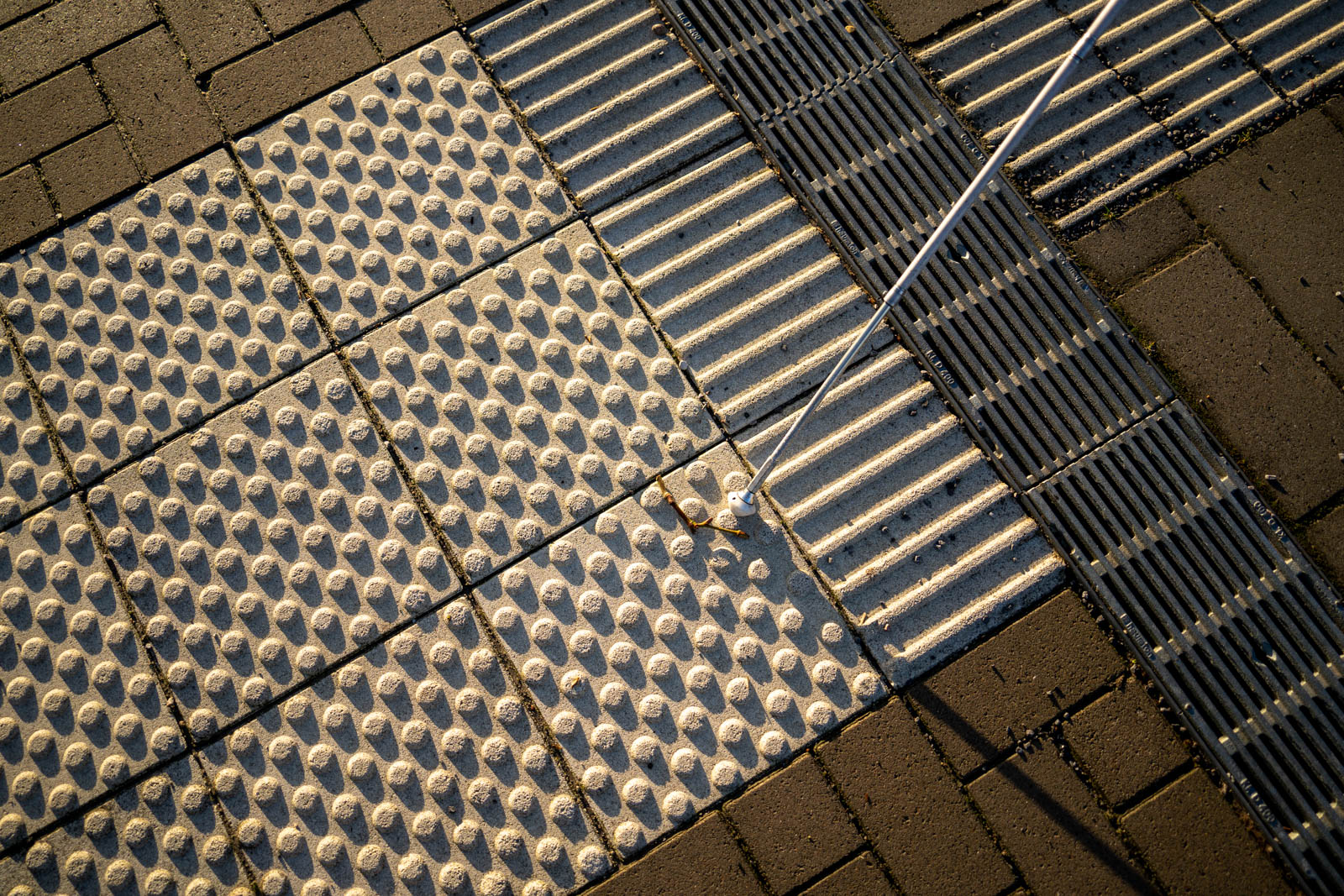Accessibility
How does a blind person orient himself on the campus?

In the ZAB's video, Jonas talks about how he gets around campus independently. Jonas is blind and uses a white cane to find his way.
Jonas demonstrates how he navigates the campus with the long stick and what is important to him for successfully managing his way. Where available, Jonas uses the tactile paving. White panels with bars or long slender bumps installed on the surface and panels with small round bumps are used to help blind and visually impaired people find their way. They have been installed in Germany since the 1980s. Ribbed fields indicate the direction of walking whereas knobbed fields are known as warning blocks that indicate a street crossing, the boarding point at a bus stop or a change in the direction of walking and so on. Tactile tiles usually consists of white, sometimes also of black panels. The strong color contrast also helps people with residual vision to find their way.
Tactile paving is indispensable for accessible public space in order to enable independent mobility for the blind and visually impaired.

Not all areas of the campus have tactile paving installed, nor does it exist throughout the entire public space. Blind and visually impaired people must therefore make do with other tactile or acoustic indicators and practice their daily routes at the beginning with the help of an accompanying person. At the beginning of his studies, Jonas, together with his father, intensively learned how to find his way around the campus. However, unexpected barriers keep appearing due to a lack of sensitivity and attention on the part of other people. On campus, too, the tactile paving on campus is frequently blocked by bicycles or motorised scooters. The ZAB therefore requests that the tactile paving is kept clear at all times.
Here you can find the ZAB's Youtube channel.